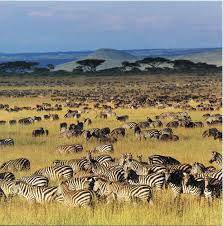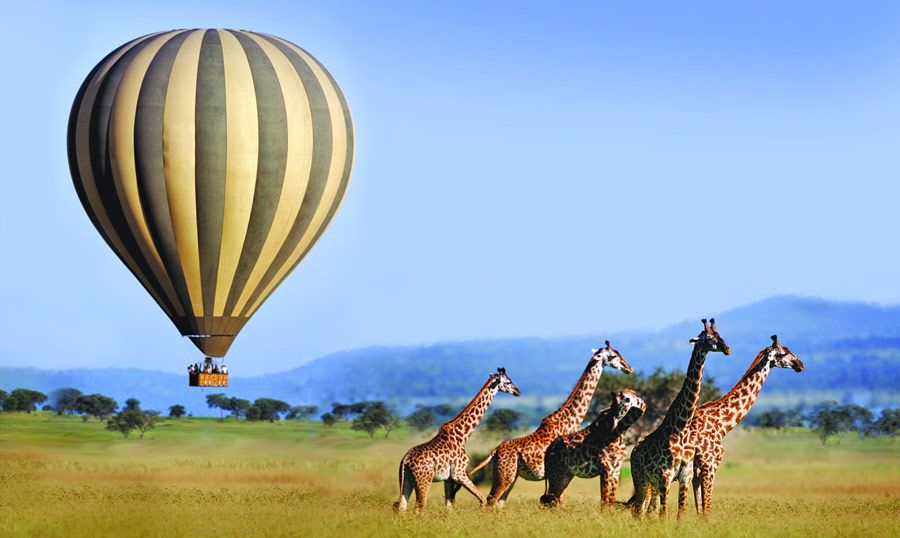Serengeti National Park is a vast wildlife preserve located in Tanzania, Africa. It is renowned for its massive wildebeest migration, which draws thousands of visitors from around the world each year. Explore the history, geography, and ecology of Serengeti National Park, as well as some interesting activities that visitors can enjoy with Pearl Africa tours taking you through the serenity vastness of the breath taking landscapes of Serengeti national park.
History
Serengeti National Park was established in 1951, making it one of the oldest national parks in Africa. The park covers an area of 14,763 square kilometers (5,700 square miles) and is part of the larger Serengeti ecosystem, which includes several other protected areas in Tanzania and Kenya.
The Maasai people have lived in the Serengeti for thousands of years, and their traditional grazing lands overlap with the park boundaries. In the early 20th century, European settlers began to establish ranches and hunting reserves in the area. This led to a decline in wildlife populations and conflicts with the Maasai.
In the 1940s, the British colonial government began to recognize the ecological importance of the Serengeti and proposed the creation of a national park. The park was officially established in 1951 and has since become one of the most famous wildlife destinations in the world.
Geography
Serengeti National Park is located in northwestern Tanzania, adjacent to the Kenyan border. It is part of the larger Serengeti ecosystem, which encompasses several other protected areas, including the Ngorongoro Conservation Area and the Masai Mara National Reserve in Kenya.
The landscape of the Serengeti is dominated by vast grassy plains, dotted with acacia trees and rocky outcroppings known as kopjes. The park also includes several important rivers, including the Mara and Grumeti, which support a diverse array of aquatic life.
The park is home to a wide variety of wildlife, including over 70 large mammal species and over 500 bird species. Some of the most famous animals in the Serengeti include the African elephant, lion, leopard, cheetah, giraffe, buffalo, and various species of antelope.
Ecology

One of the most remarkable ecological phenomena in the Serengeti is the annual wildebeest migration. Each year, around 1.5 million wildebeest, along with hundreds of thousands of zebras and other grazers, travel from the southern plains of the Serengeti to the northern part of the park and back again in search of food and water.
The migration is a vital part of the Serengeti ecosystem, providing a source of food for predators and redistributing nutrients across the landscape. It is also one of the largest mammal migrations in the world and is a major draw for visitors to the park.
In addition to the migration, the Serengeti is also home to several other important ecosystems, including riverine forests, woodlands, and savannas. These habitats support a diverse array of plant and animal life, many of which are found nowhere else on earth.
Activities

Visitors to Serengeti National Park can enjoy a wide variety of activities, from game drives and guided walks to hot air balloon safaris and cultural tours.
Game drives are the most popular activity in the park, and visitors can hire a guide or join a guided tour with Pearl Africa tours to explore the park’s vast grasslands and search for wildlife. Guided walks are also available, offering a more immersive and intimate experience of the park’s flora and fauna.

Hot air balloon safaris are a unique and unforgettable way to experience the Serengeti. Visitors can take to the skies at sunrise and float above the park’s vast plains, taking in the breathtaking views and aerial perspective of the park and its wildlife.
For those interested in cultural experiences, there are several opportunities to visit Maasai villages and learn about their traditional way of life. Visitors can also attend traditional dance performances and purchase handmade crafts from local artisans.

For more adventurous visitors, there are opportunities for multi-day hiking and camping trips in the park, allowing for a more in-depth exploration of its diverse ecosystems and wildlife.
In recent years, there has also been a growing trend towards responsible and sustainable tourism in the Serengeti. Many lodges and tour operators now prioritize environmental sustainability, community engagement, and conservation efforts, helping to ensure that the park and its wildlife are protected for future generations to enjoy.
Conclusion
Serengeti National Park is a truly remarkable destination, offering visitors the opportunity to witness one of the world’s most incredible wildlife spectacles and explore one of Africa’s most diverse and beautiful ecosystems. Whether you’re interested in game drives, cultural experiences, or hiking and camping adventures, the Pearl Africa tours is here to tailor your safari for life time memories and the good news is there something for everyone.
As you plan your trip to Serengeti National Park, remember to prioritize responsible and sustainable tourism practices, and to respect the park’s wildlife and local communities. By doing so, you can help to ensure that this incredible natural wonder remains protected for generations to come.
